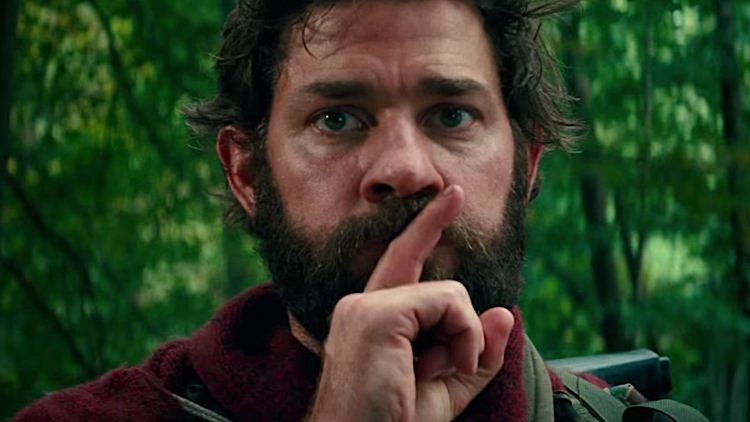A Quiet Place, directed by John Krasinski
/A Quiet Place
directed by John Krasinski
It wasn’t the first ghost-themed horror movie of the decade, but when The Ring hit theaters in 2002, a remake of a 1998 Japanese film (an adaptation of a popular 1991 novel), it created an unusual stir for a horror movie. The story of a haunted video tape that killed its viewer unless they showed it to somebody else within seven days. It was moody, quiet, and unspooled a good mystery at the center. The cleverly visceral ending dominated the conversation in high school halls for weeks.
And maybe that was its greatest strength--that teens could see it. The Ring was a knell for change after American horror of the 1990s was characterized by R-rated slashers, the spotlight falling mainly on Wes Craven’s postmodern Scream franchise (for which producer Harvey Weinstein demanded a full trilogy when he saw the audience react to a test screening of the original). Teens were of course flocking to these slashers in droves, as teens have always done for the genre, but they were buying tickets for age-appropriate movies and then sneaking into the adult stuff. With The Ring, finally, the genre’s most loyal audience was directly invited.
The film generated about $250 million on a $48 million budget (which, incidentally, was an insane amount of money to be put into a horror film, greater than the $35 million invested into Andres Muschietti’s 2017 remake of It, which grossed $700 million). And so, this coming just a few years after the horror jackpot of The Blair Witch Project (budget $60,000; box office $248 million), Hollywood decided to put its money into the genre and, until just recently, created a tireless chain of ghost- and demon-themed PG-13 horror movies. The Grudge, White Noise, 1408, The Skeleton Key, The Eye, The Boogeyman, The Village. On and on. Nearly all of them profitable, nearly all of them weak.
A Quiet Place, this month’s wonderfully lean, intelligent, gripping horror movie from director/star John Krasinski, got its MPAA (Motion Picture Association of America) rating of PG-13 a bit late, just a few days before a national release, and it came as a surprise after several months of trailers foretelling what looked like a visceral monster movie. (The rating is probably the product of several haggling appeals with the MPAA, whose ratings are issued on the basis of notoriously arbitrary nit-picks. Paul Thomas Anderson recounts here how his 1997 film Boogie Nights was given an NC-17 rating – a recipe for box office disaster – because of a scene in which a woman is talking to one man while having sex with another. The MPAA rep working with Anderson said the issue was that the woman was still humping while she spoke. The scene had to be re-shot so that she stops humping, says her line to the other man, and then continues. Anderson obliged, and got his R rating.) And though A Quiet Place isn’t on par with Get Out, last year’s titan of the genre, nor even with this year’s Unsane, its PG-13 is a terrific complement that just might ferry it toward huge success.
Krasinski plays Lee Abbott and Emily Blunt his wife, Evelyn, who live in what appears to be a post-apocalyptic world of silence, imposed by the unexplained appearance of blind monsters that hunt their prey (humans) via sound. The Abbotts live in a secluded farmhouse with their son (Noah Jupe) and daughter, Regan, played by the soon-to-be-hugely-famous Millicent Simmonds, an actor who, like her character, is deaf, and whose deep-set eyes and cherubic features are terrifically emotive, rendering a performance rivaled only by Blunt, the movie’s greatest talent. Part Ma Joad, part Ellen Ripley, Blunt plays Evelyn with stony tenderness and, in the last act, gun-toting authority. One of the best set pieces in recent horror unfolds when her pregnant character goes into jaw-clenched labor while a noise-detecting monster lurks through the hallway beside her.
A Quiet Place starts with a strong premise but is floated, finally, by Krasinski’s purely visual, communicative, straightforward direction and the inspired performances of its female leads. A simple, solid movie that, for fans of the genre, feels like something greater, like it’s maybe another title in what appears to be a golden period for horror (the past fifteen months have given us Split, Get Out, It and Unsane).
That it should create a doomed franchise is inevitable. The first sequel will almost certainly appear by 2020. But its premise is too distinct to spark a string of imitators like The Ring did. Hopefully, instead, its appearance in tandem with Unsane, and on the heels of 2017’s parade of notable horror titles, A Quiet Place will be yet another step toward dignifying, in the public eye, a genre whose potential for great storytelling has been ignored, squandered, and stands ripe for fulfillment.
Alex Sorondo is a writer and film critic living in Miami and the host of the Thousand Movie Project. His fiction has been published in First Inkling Magazine and Jai-Alai Magazine.

